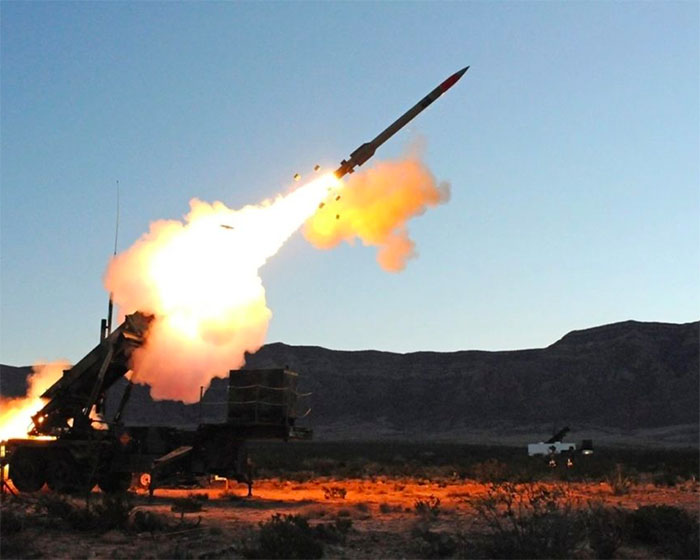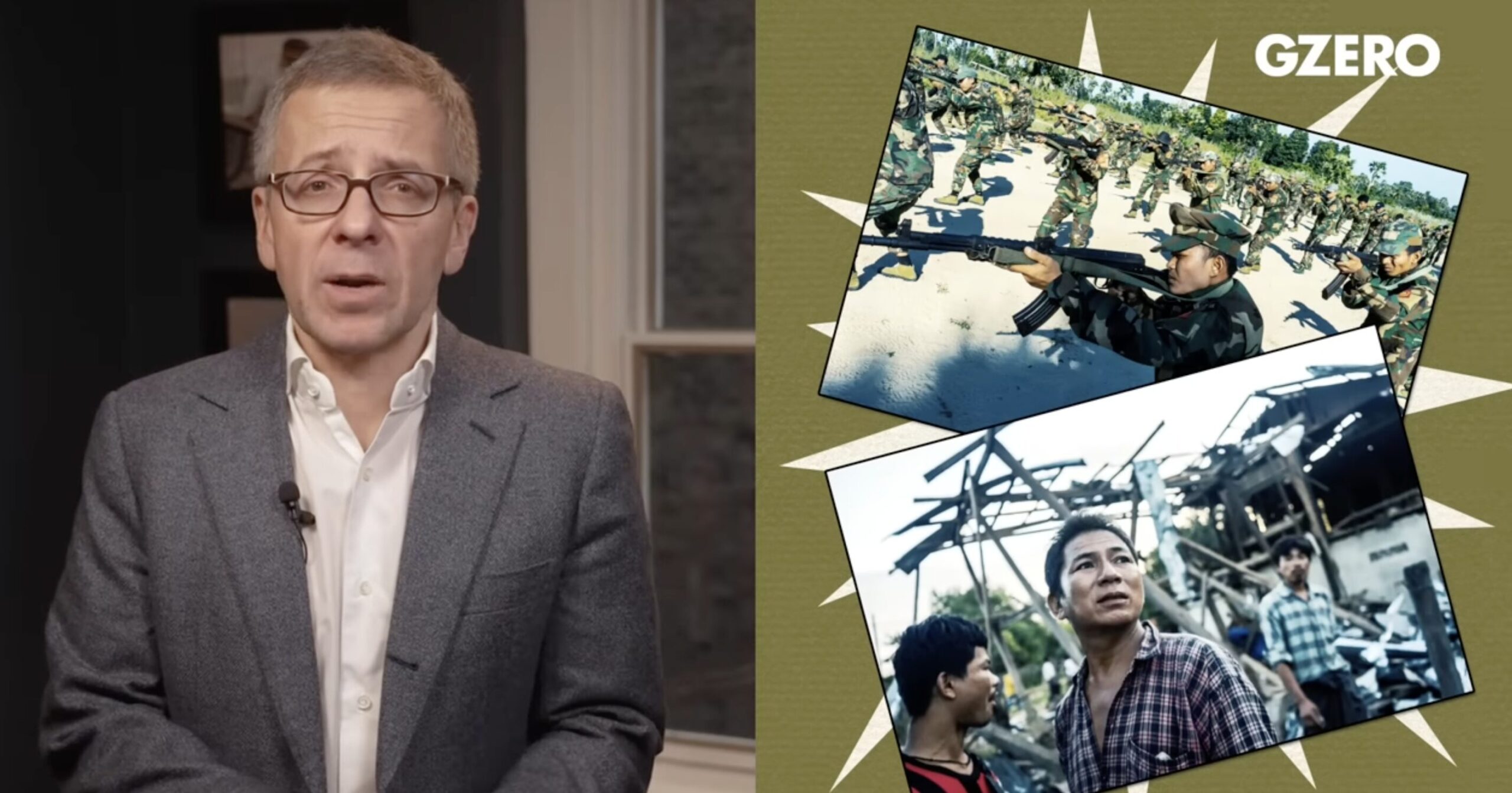
Peter Zeihan: Europe Goes Nuclear
We’ve got two major developments in Eurasia. We’re talking about Ukraine disabling two ships in the Caspian Sea and Poland getting EU approval to build…
Thought Leader: Peter Zeihan

by EYCK FREYMANN & HARRY HALEM
In the wake of Russia’s invasion of Ukraine, analysts have argued that Taiwan could benefit from a similar asymmetric defense strategy to deter or defeat a Chinese invasion. We agree. But this strategy will fail if Taiwan cannot disrupt Chinese air control. While parsing the military lessons of the Russo-Ukrainian War will take years, initial analysis suggests that Ukrainian air defenses have been critical in ensuring the country’s survival and allowing its military to operate effectively.
This lesson has direct implications for Taiwan. The Biden administration should help Taiwan build a similar air-defense capability, learning from Ukraine’s operational successes and matching them to China’s distinctive combat doctrine and aerial capabilities. Three options in particular are worth considering: transferring air-defense systems to Taiwan, funding Taiwan’s domestic air-defense programs, and deploying American-made integrated air-defense technology on the island.
Ukraine’s Air-Defense Victory
Ukraine’s ability to deny Russia air superiority has been one of its most important successes in the conflict. A month into the war, Ukraine claims to have destroyed 97 fixed-wing aircraft, including the Su-34 strike fighter, and 121 helicopters. Open-source analysts have confirmed a significant proportion of these losses. The Ukrainian Air Force is still operating, as are a number of its heavy ground-based air defenses. As a result, Russia’s broader war plans have been severely disrupted. Without air superiority to cover its ground-based forces, Russia has suffered far faster attrition than it expected. Its bombers cannot reach targets in western Ukraine, or even Kyiv, without high risk of getting shot down. Russia has used up much of its stockpile of precision-guided munitions in the vain attempt to neutralize Ukraine’s air defenses, and now has diminishing operational flexibility as the fighting goes on. Having failed to destroy Ukraine’s air defenses with airstrikes, Russia is now trying to take them out with infantry — at heavy cost of lives, equipment, and time. While we remain skeptical of Russia’s claims that it will withdraw from around Kyiv, it is undeniable that Ukraine has checked Russian offensives everywhere but in the Donbas.
Ukraine achieved this feat at minimal cost. Its military budget was only $5 billion in 2020, roughly one-twelfth of Russia’s, and air defense was not even a major line-item. Ukraine entered the conflict with several supposedly antiquated Soviet S-300 air-defense systems, six Tor medium-range surface-to-air missiles, and 75-plus point-defense surface-to-air missiles. On the ground, Ukraine has skillfully used Western-supplied man-portable air-defense systems, including the hundreds of millions of dollars’ worth of Stinger missiles provided by the United States. But Russian ground-attack aircraft are designed to survive strikes from Stingers. It is only thanks to fighter jets and ground-based air defenses that Ukraine has been able to pick off Russian forces from the air, and give its own light infantry cover to harass Russian logistics. Thanks to these capabilities, Russia has not been able to strike deeper into Ukraine with large formations of fixed-wing aircraft.
Ukraine’s air defenses may not by themselves turn the course of the war. Ukraine likely benefited from Russian doctrinal emphasis on close air support, and Russia’s view of air forces as aerial artillery. The Russian Air Force had never waged a large-scale interdiction campaign —predictably, its scripted air offensive on the war’s first day failed to destroy enough Ukrainian combat aviation and heavy anti-aircraft missile launchers to knock out the Ukrainian Air Force. Russia declared its goals achieved without actually destroying Ukrainian air capacity.
When the initial barrage failed, Moscow lost the element of surprise. However, lucky or not, Ukraine’s air defenses bought valuable time, enabling the country’s Western partners to mount a strong and coordinated response to punish Russia and support the Ukrainian war effort. This may not have happened if Russia had achieved air superiority in the first 72 hours of fighting and presented victory as a fait accompli.
Taiwan’s Challenge
The People’s Liberation Army has a different doctrine and would probably not make the same mistake in an invasion of Taiwan. The Chinese Air Force and Rocket Force are distinct from their Russian counterparts. China’s air force lacks the Russian force’s overwhelming emphasis on close air support, allowing it to gain air control more easily. China’s rocket force is a dedicated bombardment service, and has prepared for the Taiwan contingency for some time. As Evan Montgomery and Toshi Yoshihara argue, Russia’s failure, Chinese leaders may conclude, stemmed from its unwillingness to escalate more decisively and rapidly.
Taiwan also has geographic disadvantages compared to Ukraine. It has no land border with any country, let alone a U.S. ally like Poland. At only 6 percent of Ukraine’s size, it also lacks strategic depth — territory behind the front lines in which to organize its forces. Taiwan can therefore learn from Ukraine’s success, but it needs to calibrate its approach to reflect its different geography and its quantitatively larger, more sophisticated adversary. Taiwan will need significantly better air defenses than Ukraine, organized in the form of a resilient and geographically dispersed network.
Today, Taiwan’s air defenses are materially and technologically lacking. Taiwan’s military has a handful of U.S. Patriot and indigenously-developed Sky Bow batteries, some of which may have inferior, Chinese-compromised equipment. It also has an unclear number of aging surface-to-air missiles, and towed short-range anti-air cannons and missiles. In a crisis, Taiwan would use these ground-based weapons alongside its fighter aircraft. But Taiwan has just over 400 fighter aircraft in 17 squadrons. China likely has around 300 fighter aircraft in the Eastern Theater Command, and around 400–450 fighter aircraft capable of rapid deployment from the Central Theater Command, along with squadrons it could pull from throughout the country. Thus, Taiwan is likely to face around a two-to-one numerical disadvantage in the air. In fighter combat, concentration provides increasing returns to scale, giving China a decisive advantage after mobilization. Moreover, Chinese cruise and ballistic missile batteries can saturate Taiwanese airfields and exposed air defenses in a manner of hours. Of course, China will need to build up its forces before attacking, giving Taiwan time to harden its airfields and hide mobile air defenses. However, China’s thousands of ground-launched missiles, along with its surface- and air-launched missiles, make sustained defense unlikely without years of preparation. By destroying Taiwanese aircraft, air defenses, and probably warships in several days to a week, China can seize cross-strait air superiority, enabling a follow-on amphibious assault or naval blockade.
Without air control, however, China would be incapable of executing almost any military plan against Taiwan. This means that if Taiwanese air defenses can survive China’s initial scripted bombardments, China would need to shift to a traditional mission of suppression or destruction of air defense and would have to redirect tactical and strategic air forces towards ensuring air control over the Taiwan Strait. The longer this air battle lasts, the more likely the United States and its allies would be able to mobilize and intervene to support Taiwan in a broader war. Anticipating this likely course of events, the United States should expand Taiwanese air defense capabilities by any means possible.
Three Forms of Support
First, the United States can sell additional Patriot missile systems to Taiwan in its standard arms transfer packages. A Patriot battery costs around $1 billion — expensive, but not prohibitively so in the context of Taiwan’s $17 billion annual defense budget. Taiwan has shown interest in Patriots historically and the Ukraine war may convince it that additional batteries are a good investment. Covering the entire island would take 10 Patriot battalions, or around 75 percent of the American force. Taiwan as it stands has two battalions. By prioritizing large urban areas and airbases, Taiwan could reduce its requirements and improve performance with layering. If the United States provides batteries annually, it could triple Taiwan’s air defense capabilities by 2024. Washington could also offer the ground-launched advanced medium-range air-to-air missile and the Norwegian-built national advanced surface-to-air missile systems, which cost around $50 million per unit. The latter uses technology from the MIM-23 Hawk, making it easy to integrate into the Taiwanese military.
Another way to achieve a similar outcome would be to encourage allies to sell older equipment to Taiwan at reduced cost. NATO will begin to phase out Patriot in the next few years, replacing it with a next-generation system known as the Medium Extended Air Defense System, while also upgrading PAC-3 systems to the more capable PAC-4. Once this transition begins, NATO countries can sell their older Patriot batteries to Taiwan directly. If these countries fear Chinese retribution, they could transfer phased-out Patriot batteries back to the United States, which in turn could pass them on to Taiwan. PAC-3 upgrades will take time, however, and these sales would not begin until the mid to late 2020s. Thus, resale is a reasonable longer-term option, but cannot be the only policy choice.
Second, the United States should help Taiwan develop domestic missile defense programs. Taiwan’s Sky Bow missile defense system is an effective indigenously developed weapon, and Taiwan has proposed producing it jointly on an accelerated timeline. Producing parts of this system in the United States, specifically missiles and launchers rather than Taiwan’s proprietary radar systems, could enable more rapid deployment at scale in the next 18 to 24 months, improving Taiwanese credibility in high-end combat.
Third, the United States could help Taiwan create an integrated tracking and fire control system, akin to Northrop Grumman’s Integrated Air and Missile Defense Battle Command System. This system draws on data from multiple aircraft- and ground-based air defenses and enables commanders to engage air targets at greater range than provided by the standard Patriot battery. Taiwan’s F-16s could be upgraded with sensors to feed into a similar network. Even without aerial integration, linking together Taiwanese air defenses would increase their coverage, range, and effectiveness.
These options can be combined. The integrated-style system would contribute the most to Taiwan’s defense, but it would also be the hardest to implement. Integrating legacy units into this new network would take time. The United States also may not want to provide Taiwan with an American-developed system, given the possibility that Chinese intelligence operatives could compromise it or that the Chinese army could seize it if Taiwan falls. Thus, the most straightforward course of action would be to increase Patriot sales in the next arms package while working with European partners to ease contracts with Taiwan and offload older equipment.
Taiwan faces formidable geographic and technological disadvantages in the face of a looming military threat from the mainland. Air defenses are not a silver bullet, but Ukraine has proven that they are a valuable asymmetric tool. By helping Taiwan build a resilient and layered network of air defenses, the United States won’t just help Taipei gain the capacity to buy time in a direct confrontation. It will also go a long way toward deterring such a confrontation in the first place.
Eyck Freymann is Director of Indo-Pacific at Greenmantle and author of One Belt One Road: Chinese Power Meets the World (Harvard, 2020).
Peter Zeihan: Europe Goes Nuclear
We’ve got two major developments in Eurasia. We’re talking about Ukraine disabling two ships in the Caspian Sea and Poland getting EU approval to build…
Thought Leader: Peter Zeihan
Dr. Sanjay Gupta’s Top Health Stories of 2025
From the resurgence of measles to a new way to treat pain, 2025 was a challenge for public health while still offering moments of hope. Sanjay…
Thought Leader: Sanjay Gupta
Ian Bremmer: The state of global conflict in 2025
On GZERO World, Ian Bremmer takes a hard look at the biggest global crises and conflicts that defined our world in 2025 with CNN’s Clarissa…
Thought Leader: Ian Bremmer

